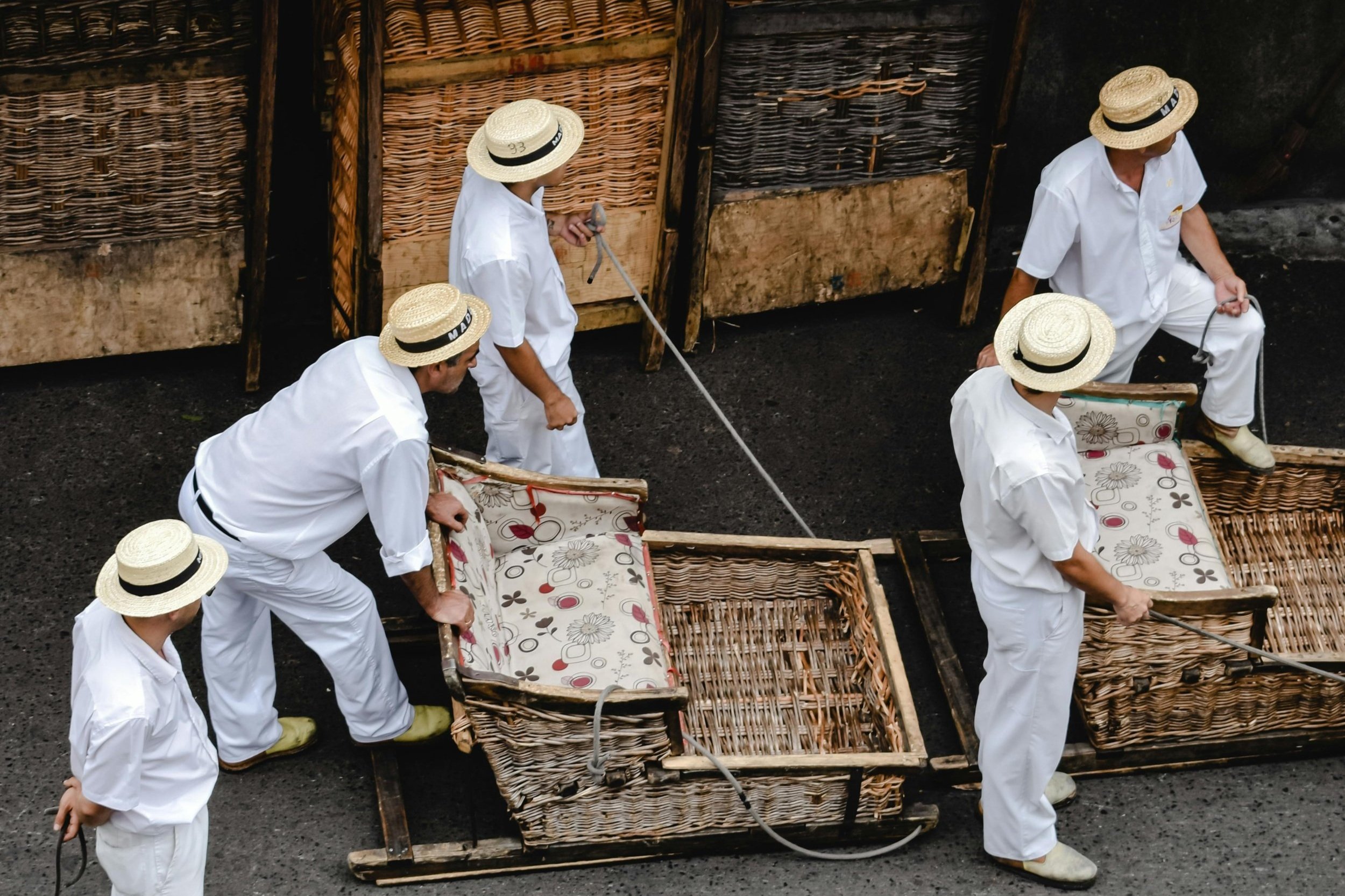7 local transport options that up the ante on your adventure
Madeira’s Toboggan Run
Call it cultural heritage, or call it adventure. Either way, how you get around your destination can be as much part of the fun as going on a trip in the first place …
Jeepney - Manila, Philippines
When the American military left their Jeeps after World War II, the Filipino’s transformed them into the colorful and uniquely Filipino icon now known as the Jeepney. Squeeze up to 20 people along the side benches and you’re ready to go. You’ll see their distinctive design across Manila with customised artwork and decorative details that showcase each driver’s personal style.
Super cheap, they run fixed routes, though you can often flag them down or signal for stops. Over time, the government has been making efforts to modernise and reduce pollution from traditional jeepneys by introducing electric versions, so long may the tradition of Jeepney’s remain.
Toboggan Run - Madeira
The ‘Toboggan Run’ dates back to the 19th century. Traditionally, the run involved a wooden sled steered by two drivers wearing white uniforms, who would guide the sled down the steep, winding streets of the capital, Funchal.
Today the sleds are made of wicker and wood, offering a smooth ride as they descend from the high hills to the city centre. The roads are steep and you will whizz down them - it’s got to be on your list if you’re going to Madeira, along with sampling the traditional Madeira cake - trust me, the locals know how to make this vanilla and chocolate treat taste like no one else.
Bamboo Train - Cambodia
The Bamboo Train, or Norry, is an informal and rustic rail system in Cambodia, primarily used in rural areas. Mounted on simple wooden platforms, these trains run on the country’s old, rarely used railway tracks.
It’s super fun to sit on and ride through the countryside in the open air.
They are easy to dismantle, allowing them to quickly clear the tracks if another train approaches. Though they are largely a tourist attraction today, they originally served as a local transportation method for villagers and goods, offering a unique glimpse into the country’s resourcefulness and ingenuity. Go and enjoy the scenic tour of the local landscape, it’s well worth it.
Jeepney in Manila
Indian Coracle - India
This small round boat has been traditionally used for fishing, transportation, and river crossing in rural parts of India centuries, in regions with many rivers, such as Tamil Nadu, Karnataka, and Odisha.
Made from a flexible wooden frame, coracles are covered with a waterproof layer such as buffalo hide or plastic. The coracle’s circular design allows it to navigate both shallow and fast-moving waters with ease. Small, paddled by hand, or guided by a stick, coracles are still widely used today, offering both a practical means of transport and a glimpse into India’s rural traditions.
They are often seen as an eco-friendly alternative to larger, more modern boats. Take a ride across a river in one and marvel at the skill of the handler as they whip through the water with ease.
Barco de Totora - Lake Titicaca, Peru
This is a traditional boat made from the totora reed, which grows in the shallow waters of Lake Titicaca on the border of Peru and Bolivia. Used by the indigenous Uros people for centuries as a primary mode of transportation, the totora reeds are harvested, bundled, and then expertly woven together to create the boat’s structure. These reed boats are lightweight, durable, and not only are they a functional transportation method but they’re also a cultural symbol of the Uros people’s deep connection to the lake. Take a ride in one and explore the floating villages built entirely on reed platforms.
Indian Coracle
Suspension Railway - Germany
Who wants convention anyway? Why ride on the tracks when you can suspend below them! Opened in 1901, the Schwebebahn is the world’s oldest suspension railway still in operation. It spans about 13 kilometers through Wuppertal, offering you a scenic and smooth ride above the city’s streets.
Praised for its efficiency and minimal environmental impact, as it avoids the need for extensive land disruption, the Schwebebahn’s combination of historical significance and innovative technology has made it a lasting icon of German engineering. It’s a definite ‘must-do’ for train offionados and it's a neat way of viewing the city.
Coco Taxi -Cuba
Cuba is renowned for its photo worthy vehicles, but have you heard of the coco taxi? Resembling a small, yellow, egg-shaped car with a large canopy and three wheels, these pepper the streets of Havana. Decorated to the whim of each driver, hail one over and hop in for a ride across town.
Compact and efficient, the coco taxi's origins can be traced back to the early 1990s when Cuba began to face economic challenges following the collapse of the Soviet Union. With gasoline shortages and limited resources, the government sought innovative alternatives to traditional, fuel-hungry vehicles. Cuban mechanics often repurpose motorbikes and scooters to power these small cabs that can hold two passengers.
Suspension railway
Bamboo train





